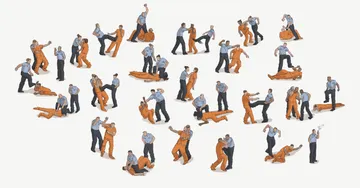If you’re looking for an appropriate way to commemorate our nation’s 242nd birthday, go protest something.
Take a knee or engage in some other nonviolent act to register your complaint against whatever irks you about the government. However you do it, it’s an American tradition that’s older than … America.
“The American Revolution was one of the most successful acts of mass civil disobedience in modern history,” says Joel Sipress, a professor at the University of Wisconsin-Superior who teaches both radical movements and traditional American history.
That’s counting as civil disobedience the full journey of the colonies’ separation from the British Empire, from initial protests against the Stamp Act of 1765 to the war and its conclusion in the Treaty of Paris recognizing the United States in 1783. Assisting in that march toward history was the response of the British crown.
Civil disobedience doesn’t necessarily mean nonviolent actions. Underground groups like the Sons of Liberty engaged in creative antics like dumping tea into Boston Harbor, but they also rioted and tarred and feathered tax collectors. Initially, county sheriffs, constables and night watch members were charged with keeping them in line (Boston did not start the nation’s first police department until 1838). The proto-police of the day included those who sometimes had to be pressed into service for the purpose of watching for prostitution and gambling, or hauling suspects off to court for violating the sabbath.
Enter then armed and uniformed soldiers deployed to more professionally enforce collections for the crown. (It’s not necessary to say “British” soldiers since the colonists also identified themselves as British, and initially had no thought of forming a separate country.) Though perhaps most analogous to the national guard today, you could say the first men in blue wore red.
And like some present-day encounters with militarized law enforcement authorities, the Redcoats’ tactics didn’t always go that well.
“The real story of the American Revolution was this cycle of civil disobedience,” Sipress says, “which prompts an overreaction by the British government with a heavy-handed use of force, which then prompts those engaged in resistance to escalate their tactics until things reach a point where the British government employs such a heavy-handed use of force that they end up delegitimizing their own state.”
The key word is escalation, or the failure to de-escalate, most notably in Boston on March 5, 1770, when a not-at-all-nice crowd taunted soldiers, daring them to “Fire and be damned!”
Captain Thomas Preston is said to have ordered his troops ‘Don’t Fire!’” But whether a gun went off after being dropped by accident or they simply didn’t hear him, they did shoot — killing three men instantly and wounding two others who later died. (It’s interesting to note that the ever-changing Wikipedia entry on this event at this writing is tagged with a warning about its neutrality. Pro-British or Pro-American?)
Fueling that protest was the murder of 11-year-old Christopher Snyder (or Seider) by an informer 11 days earlier, notes Massachusetts state Rep. Byron Rushing, who is also an historian and sees parallels to modern policing and the use and restraint of force.
And also like today, public outcry led to a murder trial of the soldiers, who were represented by John Adams, later the second U.S. president. He argued successfully that “the soldiers were endangered and they had the right to fire in self-defense,” according to john-adams-heritage.com. It’s the same they-feared-for-their-lives defense used by 21st century officers standing trial for the deaths of Philando Castile and Michael Brown.
Five years later, when the shooting began on both sides at Concord and Lexington, the war was on.
So the lessons of the revolution and events leading to it? Civil disobedience may lead to great change, especially when authorities are less than skilled at de-escalation.
Something worth remembering by law enforcement responding to the thousands of American protesters today.
Robin Washington is interim commentary editor for The Marshall Project.
